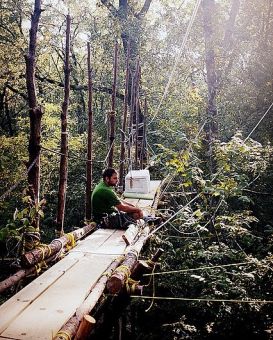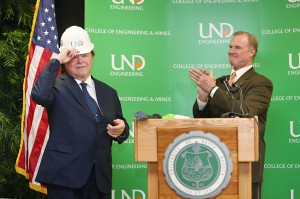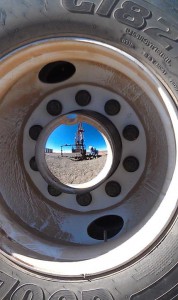 Continental Resources said that it plans to ship 65% of its Bakken oil production by rail in November.
Continental Resources said that it plans to ship 65% of its Bakken oil production by rail in November.
Continental’s Bakken production was 62,453 barrels of oil equivalent per day (boe/d) for the third quarter of 2012, an 81% increase over the third quarter of 2011 and 17% higher than the second quarter of 2012.
Continental is the No. 1 leaseholder in the Bakken, with almost 1 million net acres. The company currently has 19 operated drilling rigs in the Bakken, including 15 operated rigs in North Dakota and four in Montana.
The company posted record production of 102,964 boe/d in the third quarter, 55% above production for the corresponding quarter in 2011 and 9% above second quarter 2012 production. September 2012 production was 105,874 boe/d.
“We’ve recently seen a significant improvement in Bakken oil price differentials, reflecting higher volumes being shipped by rail to the coasts and the anticipation of increased pipeline capacity,” said Rick Bott, president and chief operating officer.
“In mid-October, Continental was railing 21,000 b/d of operated production to the West Coast, a similar volume by rail to the Gulf coast, and 8,000 b/d to the East Coast,” he added.
This rail delivery volumes are for both Bakken and South Oklahoma output. Continental now has excess transportation capacity in both pipe and rail, and, with additional infrastructure projects in the planning and construction stages, capacity should remain ahead of Bakken production growth, Bott said.
The company’s primary focus is identifying the highest-value opportunities to market its oil to the refinery end-customer.
Third-quarter production and EBITDAX growth was driven by continued production increases in the Bakken play and the South Central Oklahoma Oil Province (SCOOP), the oil- and condensate-rich resource play unveiled at Continental’s 2012 Investors Day on Oct. 9.
Bakken production increased 81% compared with the third quarter of 2011, while SCOOP production was 327% higher than the third quarter last year.
On Oct. 8, Continental unveiled a new five-year growth plan to triple production and proved reserves by year-end 2017.
According to its strategic growth plan, Continental plans to generate average production of 300,000 boe/d in 2017. Seventy percent of the company’s third quarter 2012 production was oil, with the balance being natural gas and natural gas liquids. “We expect to achieve 2012 production growth guidance of 57% to 59%,” said Harold Hamm, chairman and chief executive officer. “Other positive trends we expect to continue are reduced drilling and completion cycle times and low production costs,” he said. Continental expects 30% to 35% production growth next year, the first year in its new five-year plan aimed at tripling production and proved reserves.
Continental reported net income of $44.1 million, or $0.24 per diluted share, for the third quarter of 2012. Adjusted earnings were $0.87 per diluted share for the quarter, excluding the combined effects of an unrealized loss on derivatives, property impairment charges and relocation expenses.
After-tax adjustments that reduced net income included a net non-cash unrealized loss on derivatives of $97.1 million, property impairment charges of $16.9 million, and $1.4 million in costs related to the company’s headquarters relocation to Oklahoma City.
For the third quarter of 2011, the company reported net income of $439.1 million, or $2.44 per diluted share. Last year’s third quarter net income, on an after-tax basis, was increased by a $332.5 million net non-cash unrealized gain on mark-to-market derivative instruments and reduced by a net charge of $16.3 million for property impairments.
Adjusted earnings for the third quarter of 2011 were $0.69 per diluted share, excluding the unrealized gain on derivatives and the property impairments.
Consequently, third quarter 2012 adjusted net income of $0.87 per share was 26% above adjusted net income for the third quarter of 2011 and a similar increase over adjusted net income for the second quarter of 2012.
–Edgar Ang, eang@opisnet.com | www.opisnet.com











